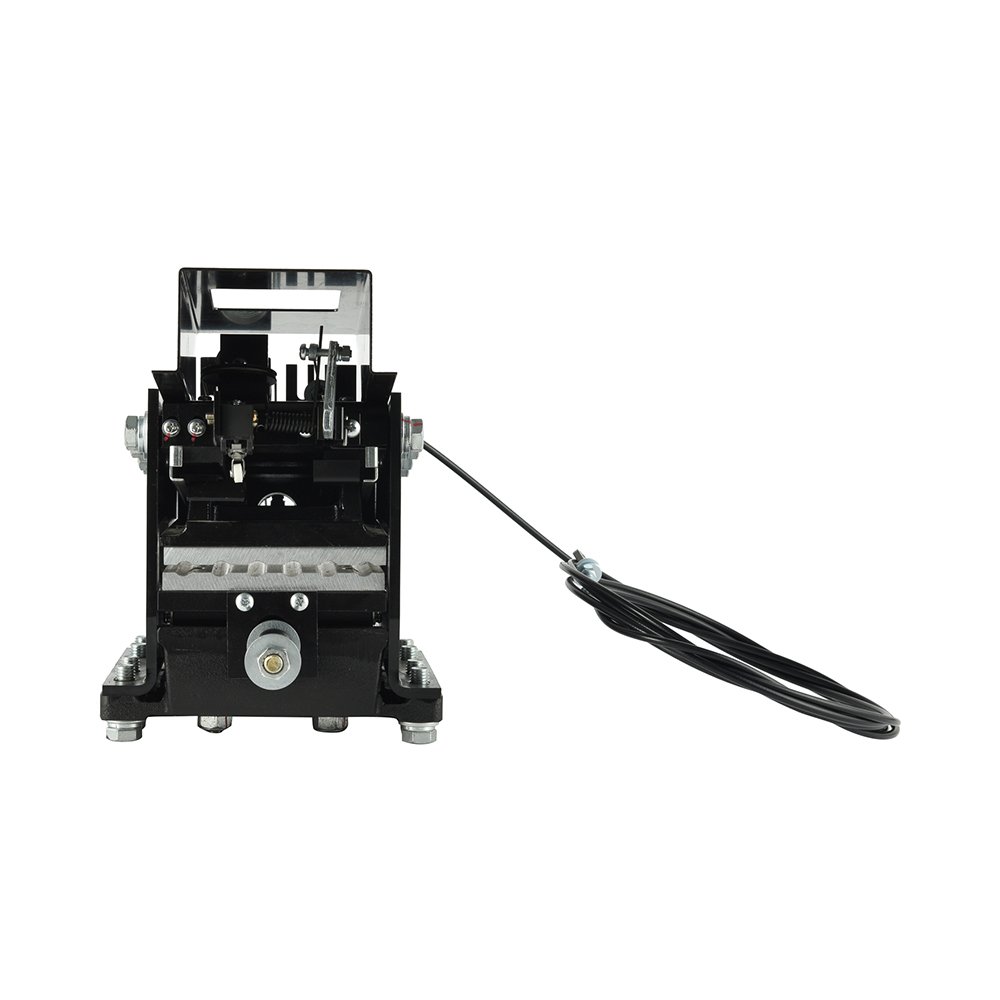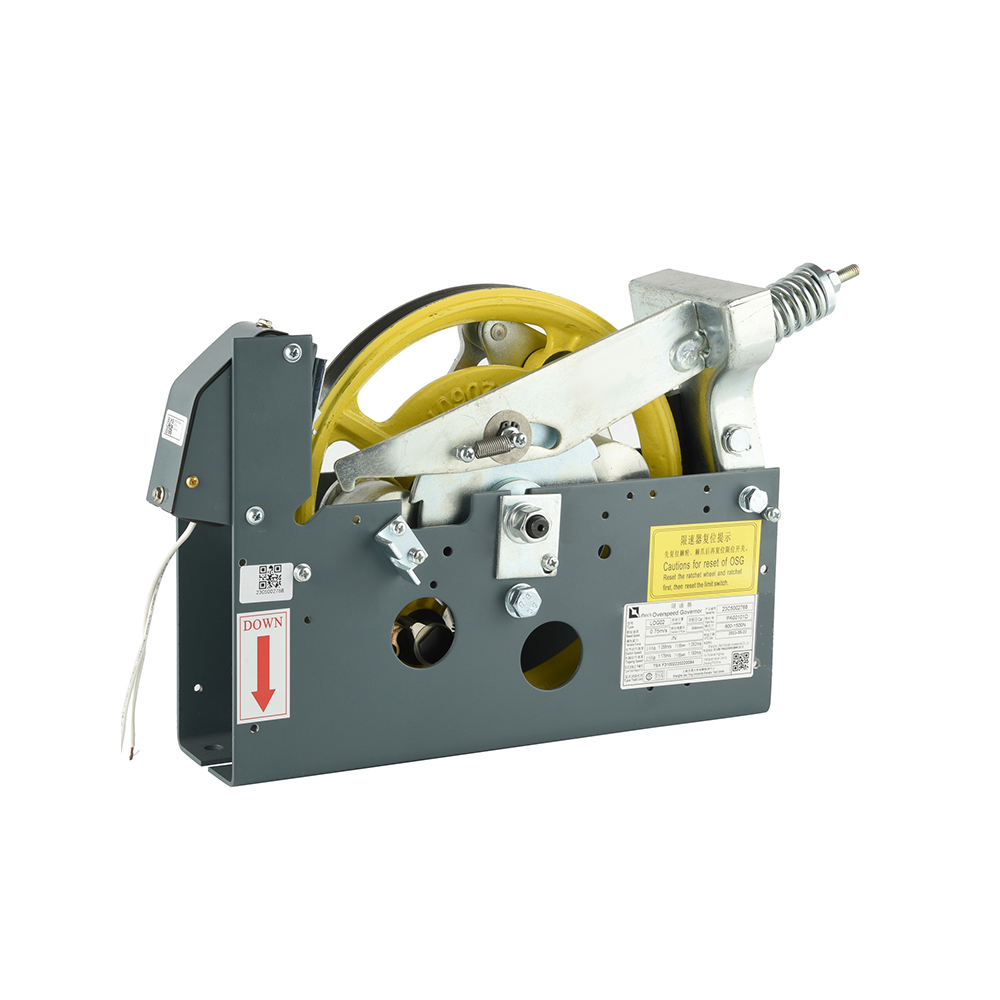What Are Elevator Wire Rope Brakes and Why Are They Essential?
Understanding Elevator Wire Rope Brakes: The Final Safety Frontier
In the complex ecosystem of elevator safety systems, elevator wire rope brakes represent a critical redundancy mechanism that provides an additional layer of protection beyond conventional safety devices. These specialized brakes function as an independent stopping system that engages directly with the suspension ropes, offering reliable emergency stopping capability even when primary safety systems fail. The fundamental importance of these devices lies in their ability to prevent catastrophic accidents by ensuring controlled deceleration and complete stopping of elevator cars during overspeed conditions or system malfunctions. Modern building codes and safety standards increasingly recognize the value of such redundant systems, particularly in high-rise structures and high-speed elevator applications where passenger safety cannot be compromised.
- Independent safety system operating parallel to traditional safety gear
- Direct engagement with suspension ropes for positive stopping action
- Essential for modern high-rise and high-speed elevator applications
- Complements existing safety systems without interfering with normal operation
How Do Elevator Wire Rope Brakes Work? The Complete Mechanism
The operational principle of how do elevator rope brakes work centers around controlled friction application and fail-safe design philosophy. These systems typically employ a spring-applied, electrically-released mechanism that ensures automatic engagement during power failure or emergency situations. When activated, high-friction brake linings clamp onto the steel suspension ropes with precisely calculated force, converting the kinetic energy of the moving elevator into heat energy through controlled friction. This process generates progressive deceleration that brings the elevator to a smooth but firm stop without causing excessive stress on the rope structure or passenger discomfort. The engineering behind these systems involves sophisticated calculations regarding friction coefficients, heat dissipation, and mechanical advantage to ensure reliable performance under various load and speed conditions.
- Spring-applied mechanism ensures fail-safe operation during power loss
- Electrically-released design permits normal elevator operation
- Progressive deceleration prevents sudden stops and passenger injury
- Advanced heat dissipation systems prevent damage during engagement
Key Components and Their Functions
The effectiveness of wire rope brake systems depends on the precise interaction of several critical components, each engineered for specific functions within the safety system. The brake calipers, typically manufactured from high-strength steel alloys, provide the structural framework and mechanical advantage needed to generate sufficient clamping force. Within these calipers, specialized brake linings made from composite friction materials engage directly with the suspension ropes, designed to provide consistent stopping power while minimizing rope wear. The actuation system, whether electromagnetic or hydraulic, controls the precise timing and force of engagement, while monitoring sensors continuously assess system readiness and detect any abnormalities in operation.
Essential Wire Rope Brake Maintenance Checklist for Optimal Performance
Implementing a comprehensive wire rope brake maintenance checklist is crucial for ensuring these critical safety devices remain operational when needed most. Regular maintenance not only extends the service life of the components but also verifies system reliability through systematic testing and inspection protocols. A proper maintenance regimen should include visual inspections, functional testing, performance verification, and documentation review to create a complete safety assurance program. Maintenance frequency should be determined based on elevator usage intensity, environmental conditions, and manufacturer recommendations, with more frequent inspections in high-traffic installations or harsh operating environments.
- Monthly visual inspections for wear, alignment, and contamination
- Quarterly functional tests verifying activation and stopping performance
- Annual comprehensive inspection by certified elevator safety professionals
- Documentation and record-keeping for compliance and liability purposes
Critical Maintenance Intervals and Procedures
The maintenance schedule for wire rope brakes follows a tiered approach that balances operational demands with safety requirements. Daily or weekly visual checks by elevator technicians can identify obvious issues like fluid leaks, physical damage, or foreign object interference. Monthly inspections should include detailed examination of brake lining thickness, verification of clearance specifications, and checking for proper lubrication of moving components. Quarterly maintenance must include functional testing under controlled conditions to verify response times and stopping distances, while annual comprehensive maintenance should involve performance calibration, replacement of worn components, and detailed documentation for regulatory compliance.
| Maintenance Activity | Frequency | Key Performance Indicators |
| Visual Inspection | Monthly | Lining wear, structural integrity, contamination |
| Functional Testing | Quarterly | Response time, stopping distance, engagement force |
| Comprehensive Calibration | Annually | System performance, compliance verification |
| Component Replacement | As needed | Wear limits, manufacturer specifications |
The Vital Role of Wire Rope Brakes in a Redundant Safety System for Elevators
Understanding wire rope brakes as a crucial element in a redundant safety system for elevators requires appreciation of modern safety engineering principles. Redundancy in elevator safety means having multiple independent systems capable of preventing accidents, ensuring that failure of one component doesn't lead to system-wide catastrophe. Wire rope brakes provide this redundancy by operating completely independently from the primary safety gear and governor systems, using different activation mechanisms and engaging different physical components. This layered safety approach follows the fail-safe design philosophy where systems default to a safe state during failures, and represents current best practices in vertical transportation safety engineering for commercial and high-rise applications.
- Independent activation system separate from governor-controlled safety gear
- Different engagement mechanism using rope friction rather than guide rail wedging
- Additional protection layer during multiple system failures
- Compliance with increasingly stringent international safety standards
Understanding the Complete Cost of Installing Elevator Rope Brakes
When evaluating the cost of installing elevator rope brakes, building owners and managers must consider both direct and indirect financial factors beyond simple equipment pricing. The total investment includes the brake units themselves, structural modifications if necessary, professional installation labor, commissioning and testing, and ongoing maintenance requirements. For new construction projects, integration during the design phase typically incurs lower costs than retrofitting existing structures, as architects can accommodate space requirements and structural supports from the beginning. The financial analysis should also consider potential insurance premium reductions, liability protection benefits, and increased property value resulting from enhanced safety systems.
- Equipment costs based on elevator capacity and speed requirements
- Professional installation and integration with existing control systems
- Structural reinforcement requirements for existing buildings
- Ongoing maintenance and periodic recertification expenses
Cost Comparison: New Installation vs. Retrofit Scenarios
The financial implications of installing wire rope brakes vary significantly between new construction and existing building scenarios, with each presenting distinct cost structures and implementation challenges. New installations benefit from integrated design, where structural supports and space allocation can be incorporated during construction, typically reducing implementation costs by 25-40% compared to retrofits. Existing building retrofits often require custom engineering solutions, potential structural modifications, and more complex installation procedures that increase labor costs and project duration. Additionally, retrofit projects may involve elevator downtime costs and temporary service interruption expenses that must be factored into the overall financial analysis.
| Cost Component | New Installation | Retrofit Project |
| Equipment Costs | Standard pricing | Potential custom engineering premiums |
| Labor Expenses | Scheduled during construction | Complex access and installation challenges |
| Structural Modifications | Minimal (designed in) | Potential reinforcement requirements |
| Operational Impact | None (pre-commissioning) | Elevator downtime costs |
A Practical Guide to Retrofit Wire Rope Brakes for Old Elevators
The process to retrofit wire rope brakes for old elevators requires careful planning, engineering assessment, and professional execution to ensure successful integration with existing systems. The retrofit process begins with a comprehensive evaluation of the current elevator system, including structural capacity assessments, hoistway space verification, and control system compatibility analysis. Engineering professionals must determine the optimal mounting location, necessary structural reinforcements, and interface requirements with existing safety circuits. Successful retrofitting transforms older elevator systems by adding modern safety redundancy without requiring complete system replacement, thereby extending the service life of existing equipment while bringing safety standards to current expectations.
- Comprehensive pre-installation assessment and engineering survey
- Structural analysis for mounting point integrity and load capacity
- Control system integration and safety circuit modifications
- Post-installation testing and certification compliance verification
FAQ
How often should wire rope brakes be tested and inspected?
Wire rope brakes require a structured testing and inspection regimen to ensure operational reliability. Monthly visual inspections should verify physical condition and absence of contaminants. Quarterly functional tests must confirm proper activation and stopping performance under simulated emergency conditions. Annual comprehensive inspections by qualified professionals should include detailed measurement of lining wear, verification of actuation forces, and calibration of monitoring systems. Additionally, after any emergency activation, immediate thorough inspection and potential component replacement is necessary before returning the elevator to service.
What is the typical service life of wire rope brake systems?
The service life of wire rope brake systems typically ranges from 10 to 15 years, depending on usage patterns, environmental conditions, and maintenance quality. The brake linings, being wear components, generally require replacement every 3-7 years based on elevator utilization intensity. The structural components, when properly maintained and protected from corrosion, can often remain in service for 20 years or more. Regular maintenance and timely replacement of wear components significantly extend the overall system lifespan while maintaining safety performance.
Can wire rope brakes be installed on all elevator types?
Wire rope brakes can be installed on most traction elevator systems, including gearless, geared, and machine-room-less configurations. However, installation feasibility depends on specific hoistway conditions, available space, and structural capacity. Hydraulic elevators typically don't require these systems due to their different safety characteristics and lower operating speeds. Each installation requires professional assessment to determine compatibility, necessary modifications, and optimal configuration for the specific elevator type and usage profile.
What international standards govern wire rope brake design and installation?
Wire rope brakes must comply with several international safety standards, primarily EN 81-1/2 in Europe and ASME A17.1/CSA B44 in North America. These standards specify design requirements, performance criteria, testing protocols, and installation guidelines. Additionally, regional building codes and safety regulations may impose additional requirements. Compliance with these standards is verified through rigorous testing by certified laboratories and ongoing quality assurance programs throughout the manufacturing process.
How do wire rope brakes integrate with modern elevator control systems?
Modern wire rope brakes integrate with elevator control systems through dedicated safety circuits that monitor brake status and enable remote testing capabilities. Integration typically involves connection to the elevator controller for status monitoring, interface with the building management system for centralized safety monitoring, and sometimes connection to remote monitoring services for predictive maintenance. Advanced systems feature self-diagnostic capabilities that continuously monitor component health and predict maintenance needs, while maintaining complete electrical and functional independence from primary operational systems to ensure safety integrity.


 English
English 中文简体
中文简体 русский
русский Español
Español Deutsch
Deutsch








